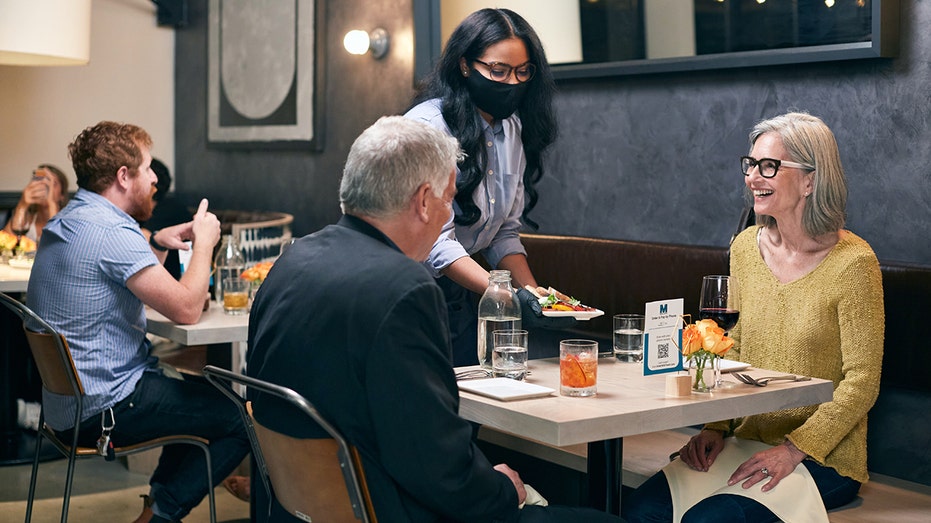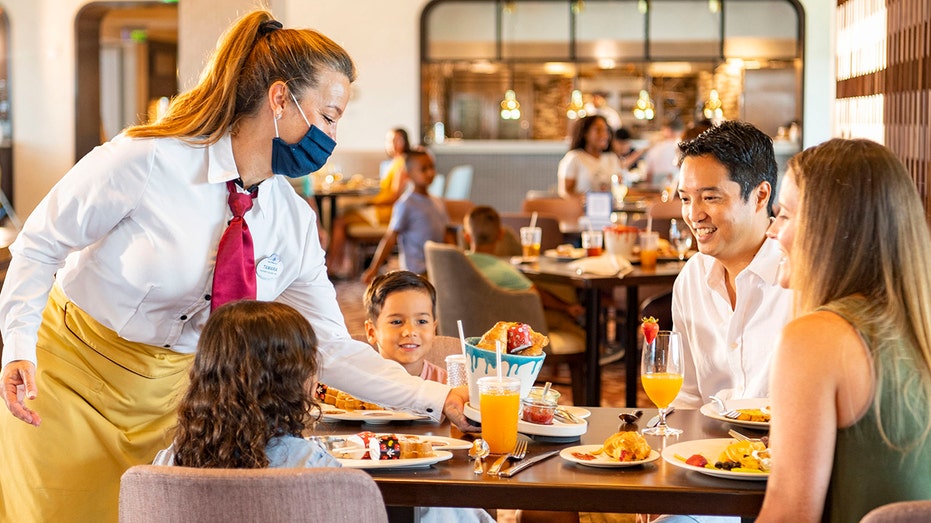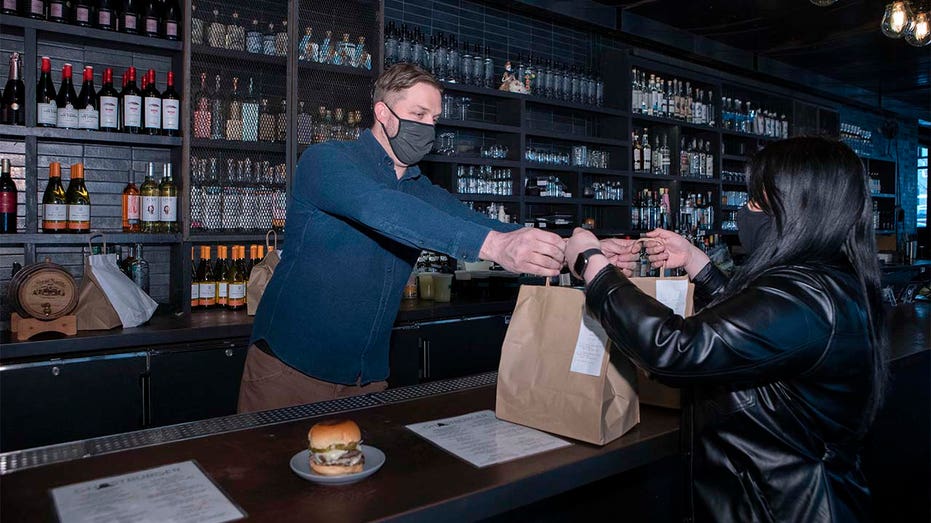COVID-19-closed restaurants are reopening. Running them is still a battle.
Restaurant owners have been planning for months to reopen
A year into the pandemic, restaurants’ wish is coming true: State and local governments are allowing them to seat and serve customers indoors again. But that comes with its own challenges.
Every state in the country now permits some level of indoor dining. Even heavily restrictive states including Michigan, Illinois and California are reversing dine-in bans that were imposed late last year to try to curb a surge in coronavirus cases.
Some restaurant operators said the new uncertainties represent another daunting phase of the pandemic, and one they can’t foresee ending soon. Those whose businesses survived the past year said they are struggling to predict how many patrons will come back, and how fast. They also have no template for how much food to buy, staff to retain and which pandemic-related changes to keep.

Toast Inc. is planning an initial public offering that could value the restaurant-software provider at around $20 billion. (Associated Press)
Many customers remain hesitant. Fifty-three percent of Americans are comfortable with the prospect of eating at a restaurant now, while the rest said they needed more time, according to consumer polling firm CivicScience. About 37% of consumers planned to dine in a restaurant in the following week, roughly equal to levels measured during the fall, the late-February survey found.
Chicago-based restaurant EL Ideas reopened for indoor dining on Valentine’s Day weekend, and the robust business surprised co-owner Phillip Foss. Soon after, sales slumped again. For Michelin-starred EL, which now also has a side business of barbecue to go, the unpredictability complicates menu planning, food ordering and staffing.
WHISKEY IS ABOUT TO GET CHEAPER STARTING TOMORROW
“I feel like I’m a yo-yo,” said Mr. Foss, whose personal savings are tied to the restaurant. “I don’t think I’m going to feel like my feet are on solid ground for a year.”
For the independent operators who run the majority of U.S. restaurants, navigating a reopening is often a nerve-racking process, owners said. Smaller chains and stand-alone eateries typically have a smaller financial cushion compared with big chains, operators said. Small operators tend to have less leverage in their supply contracts and can’t spread their financial burdens across multiple locations.

A high end restaurant reopens after the 2010 Covid-19 lockdown, with measures in place to protect staff and customers.
“It’s out the window, the idea of projecting your sales,” said Lindsay Rae Burleson, co-owner of the Two Headed Dog, a bar and restaurant in Houston.
To survive limits on indoor dining, some owners sunk thousands of dollars into to-go operations, outdoor patios and other means of selling. Owners are debating what to keep as they try to understand customers’ mind-sets.
COSTCO BACON DEMAND JUMPS AS PORK PRICES CLIMB
The Restaurant Group, owner of New York City, Washington, D.C., and North Carolina eateries, is juggling a spectrum of services, including limited indoor dining, patio service and to-go sales across 10 of 11 restaurants still operating. Owner Jeremy Wladis is also running two dozen online-only brands started out of the company’s kitchens to try to stay afloat during the pandemic.
“It’s chaos,” said Mr. Wladis, who said he has tried to keep his staff employed even when hours have been unpredictable. “Every time you think you know something, it changes.”

LAKE BUENA VISTA, FL - JUNE 23: In this handout photo provided by Walt Disney World Resort, new measures are in place to promote health and well-being in table-service restaurants at Walt Disney World Resort on June 23, 2020 in Lake Buena Vista, Flor
Restaurateurs like Messrs. Wladis and Foss said they realize they are fortunate to still have businesses to run. U.S. restaurants and bars have lost billions of dollars in sales during the pandemic because of the dine-in restrictions, as consumers spent more at supermarkets and ate at home. More than 110,000 restaurants and bars closed for good or temporarily last year, according to the National Restaurant Association.
Orders at sit-down chains were 37% lower in the week ended Feb. 21 compared with the corresponding week last year, according to industry-research firm NPD Group.
BETTY CROCKER, BARBIE LAUNCH SCIENCE-BASED BAKING LAB TO ENCOURAGE GIRLS
As of this week, 22 states are letting restaurants operate at full capacity, according to the Restaurant Association. San Francisco restored limited indoor dining last week for the first time since November. Texas, the state with the second-most restaurants and bars in the country after California, is removing all occupancy restrictions and allowing customers to forgo mask requirements.
Some epidemiologists have said restaurant capacity limits are being lifted too fast, too soon. Federal officials also have cautioned against removing coronavirus-related restrictions too quickly, as virus variants circulate and signs suggest that progress has leveled off. Last week, researchers with the U.S. Centers for Disease Control and Prevention reported that counties that allowed on-site restaurant dining had a rise in Covid-19 cases and deaths in the weeks afterward. Limiting in-person dining and mandating masks can help reduce virus transmission and deaths, researchers said.

Josh Phillips, the co-owner of Espita, a stylish Mexican restaurant, hands over carryout to a customer at his restaurant in downtown Washington, Monday, Feb. 15, 2021. Phillips opened a delivery-only brand called Ghostburger in August to keep Espita’ (AP)
While indoor-dining restrictions benefited some fast-food chains’ to-go business, many casual-dining restaurant companies experienced losses, despite beefing up their own takeout options.
Some restaurant operators believe they can operate safely and said that many customers have returned when they opened their doors.
TEXAS-BASED ALAMO DRAFTHOUSE FILES FOR CHAPTER 11 BANKRUPTCY
John Peyton, chief executive of Dine Brands Global Inc., DIN +1.47% said the Applebee’s parent is confident in its ability to keep customers and workers safe, and that the return of indoor dining is crucial. When a state has increased indoor-dining capacity, the improvement to the company’s sales is almost immediate, he said.
“We’ve been planning for the return to our restaurants for months,” Mr. Peyton said.
Reopenings haven’t always translated into a complete rebound for restaurants.
In Florida, which allowed restaurants to return to full occupancy in September, several chain owners said sales have bounced back. But statewide restaurant reservations remain roughly 20% lower than the previous year, according to online booking site OpenTable, and restaurant operators said tourist centers such as Orlando are sluggish.
GET FOX BUSINESS ON THE GO BY CLICKING HERE
Ms. Burleson, the Houston bar owner, is for now keeping capacity at 50% to help customers and workers feel safe. She wasn’t able to exceed that level and wasn’t typically bumping up against it, as demand remains low and irregular, she said. Ms. Burleson has taken on odd jobs to try to get by until the summer, when she hopes sales will improve and stay that way. Her entire savings have gone into keeping her establishment alive, she said.
“If this goes away, all I have is a dog,” Ms. Burleson said.




















